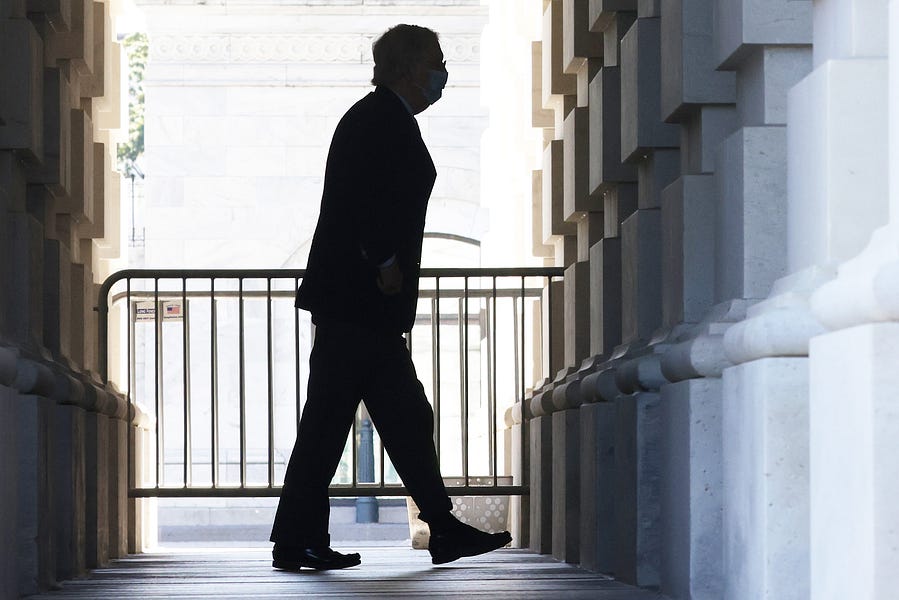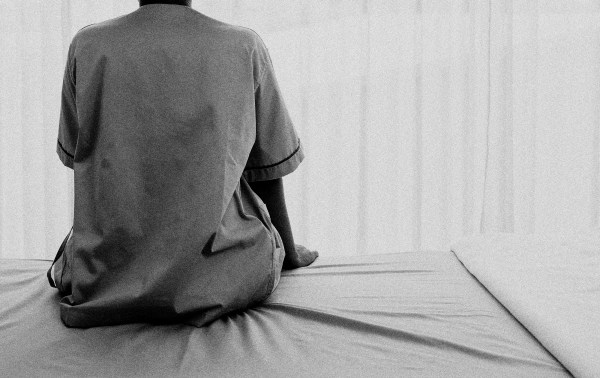As if a pandemic, economic crisis, social unrest, and political polarization didn’t make our upcoming election fraught enough, we’re adding to that mix what is universally anticipated to be one of the most intense Supreme Court confirmation battles the country has ever seen.
The opening skirmishes of this battle have, of all things, focused on the Senate calendar, precedent, and practice. There is no question that a Supreme Court confirmation process conducted in the heat of a presidential contest presents unusual circumstances. The Senate traditionally slows the pace of judicial confirmations in election years and, historically, confirms few nominees after the August recess. Supreme Court vacancies occur rarely enough that the data set practically invites “p-hacking”—the conjuring of a “rule” that conveniently both fits the data and supports a desired outcome.
In truth, when a Supreme Court vacancy occurs, the president has the power to nominate, and the Senate to confirm, a new justice. A case can be made that prudent, enlightened leaders would not seek to fill the vacancy during an election season, especially in divisive times like ours. Whatever the case, we do not live in an age—or enjoy a politics—marked by prudence.
President Trump won the election, in large part, thanks to his commitment to appoint judicial conservatives, originalists, and textualists to the bench. The Republican Senate majority campaigned on the pledge to support such nominees. Republican voters expect both to deliver. Whatever the prudential arguments, one could hardly expect that elected Republicans would defy the expectations of their voters and flinch from filling a crucial Supreme Court vacancy when the opportunity arose and time remained to do so. For many, the searing experience of the Kavanaugh confirmation hearings drew home a lesson that the left knows no limits in the judicial confirmation fights and, therefore, a decision to defer filling a vacancy out of courtesy to the other side would amount to something between dereliction and madness.
And so it took less than a day after the passing of Ruth Bader Ginsburg for the White House and Mitch McConnell to declare their intentions. Trump has indicated that he will announce his choice—a woman, it is promised—by week’s end. While GOP Sens. Susan Collins and Lisa Murkowski have indicated they will not vote to confirm the nominee, at least not before the election, Mitt Romney announced Tuesday that he would support such a vote, and so Senate Majority Leader McConnell appears to have the votes. (Largely based on a precedent established by Senate Democrats in the Obama administration and applied to the Supreme Court during the Gorsuch nomination, the minority can no longer defeat judicial nominations by filibuster.)
Many questions remain. How the next several weeks play out will depend on the identity of the nominee, her performance in confirmation hearings, and tactics deployed by both politicians and activists on both sides. They will have consequences for the court, the Constitution, and the November election.
One large question looming is the timeline and whether the confirmation vote itself will happen before or after the election. The White House and some senators, including Judiciary Committee Chairman Lindsey Graham, have pushed for a vote to occur before the election. Sen. Roy Blunt has said “I think it should take as long as it takes, and at the same time I don’t think we should drag it out.”
So how long does it take?
The Constitution presents a rather straightforward process for judicial confirmation: The president sends the Senate a name, the Senate votes its advice and consent on the confirmation. This process, it would seem, could take an afternoon.
And indeed, from the early years of the republic until the middle of the 20th century, the entire judicial confirmation process routinely took a matter of days. The Senate has confirmed several justices on the same day it received the nomination. Justice Owen J. Roberts, confirmed in 1945, is the last justice to be confirmed within 24 hours of his nomination. He is also the last sitting senator to be appointed to the court.
(Although the confirmation process once moved more swiftly, that is not to say the Senate always deferred to the president. The Senate frequently rejected nominees in the early history of the Republic, and George Washington saw his second nominee to serve as chief justice vilified by politicians, destroyed in the press, and voted down in the Senate. The nominee later attempted suicide.)
The modern process, of course, looks nothing like what it once did.
For better (and mostly for worse), today’s federal judiciary resolves the questions that divide Americans most deeply. It’s not a surprise, then, that the Senate no longer renders its confirmation decisions over afternoon tea.
Instead, the Senate has developed an elaborate ritual for examining the merits of judicial nominees, one that is heightened for nominees to the Supreme Court. Although the precise timelines have varied, in recent decades, the process has taken from two to three months. The election is 41 days away.
The most visible part of this process, of course, is the (televised) public confirmation hearings. The precise length of the hearings has bounced around, but the modern standard is generally a four-day hearing, with most of the first day reserved for opening statements and the final day set aside for testimony by outside witnesses. While it’s certainly possible to imagine hearings conducted in fewer days, the hearings for every sitting justice lasted at least four days.
These hearings are a modern innovation. Nominations were not even referred to the Senate Judiciary Committee until after the Civil War, and nothing resembling confirmation hearings occurred until the 20th century. Hearings became routine only during the late 1950s.
But the confirmation hearings, as crucial as they are, make up just a fraction of the expected process and they typically do not commence until weeks after a name is announced. In the weeks leading up to the public hearings, a great deal of work takes place behind the scenes. On Capitol Hill, senators and staff must plan the logistics for the hearings, bone up on legal controversies, and scrutinize the writings and record of the nominee.
Meanwhile, the nominee herself must prepare for her presentation to the Senate. She must know her own record, backward and forward, and prepare to answer for it. She must also know, to the extent possible, every area of law she might face questions on. These can range from hot-button constitutional and criminal law issues, to more obscure areas of law that many lawyers have never encountered—like Indian law and water rights—but that have great political saliency to certain senators from certain parts of the country. Knowing this information is the first step, knowing how to face a grilling on this information is the second step, and she will likely participate in many hours of practice sessions with White House and Justice Department lawyers playing the role of senators from both parties.
The nominee, however, won’t have the luxury of empty days until her hearings to do all this preparation. Before the hearings, even days after a nomination, nominees traditionally make “courtesy visits” on senators. These visits were once limited to key senators such as Senate leaders and Judiciary Committee members, but have proliferated in recent years. Today, a nominee is likely to meet with dozens of senators, and several recent nominees have met with more than half the Senate. (It’s likely that most Senate Democrats, who oppose proceeding on filling the Ginsburg vacancy, will pass on meetings this time. If so, they may unwittingly be doing her a favor.)
These so called “courtesy visits” may conjure images of coffee, cake, and exchanged photos of children and grandchildren, but these can be consequential moments in the course of a nomination. Certainly some senators use the occasion to simply meet the nominee, but others may grill them on legal questions. Failure to perform well in these meetings, both in presentation and substance, could seriously damage a nominee’s prospects for confirmation. Reportedly, the nomination of Harriet Miers took on considerable water in this process ,and she withdrew from consideration before her public hearings began.
Parallel to the substantive evaluation of a nominee’s record and judicial philosophy, the Senate conducts a character and fitness evaluation. This is a discrete and sensitive process (which famously went off the rails in the Kavanaugh hearings). Within days of making a nomination, the White House will share with the Senate the results of an FBI background investigation on the nominee. Once received, a small select group of Senate Judiciary Committee staffers, with security clearances, will examine the file. If it raises any red flags, they may conduct additional investigation on their own. Ultimately, the nominee may face questions in an “off the record” portion of her hearings focused exclusively on “background” issues. The committee has developed a practice of holding this “off the record” session even if there’s nothing of substance to discuss, so as not to raise public concerns one way or the other.
Typically these pre-hearing proceedings take at least several weeks, followed by a week devoted to the hearings. (This is if all goes smoothly. A late-breaking allegation like what occurred in the hearings for Justices Kavanaugh and Thomas can add weeks to the proceedings, including added hearing days.) After the gavel drops on the last day of the hearings, the nominee may feel she has finished the bulk of her work, but the Senate still has work to do.
Next, the Judiciary Committee must debate and vote on whether and how to report the nomination to the full Senate. (Senate practice has been to not defeat a disfavored Supreme Court nomination in committee, but instead to report the matter to the Senate with a negative recommendation.) Because committee rules allow any member to “holdover” an item on the agenda for one week before casting that vote, generally we can expect full Senate consideration of a nomination will occur a couple of weeks after the hearings. The process on the floor of the Senate can also take a few days, on account of both the desire of most senators to speak on the nomination, and procedural features such as a “cloture vote” to end debate.
To be sure, as mentioned at the outset, the Constitution requires little of this process and one could argue about whether the norms of the last few decades improve on the past. If the president chooses a nominee who has recently faced Senate confirmation, as appears likely, Republicans could reasonably argue that most of its work on reviewing her record and ethical background has already been completed. Still, if the Senate follows the main guideposts of modern practice it is possible, but difficult, to complete all this work before the election, particularly in the face of massive resistance from Democrats. Even an aggressively streamlined approach leaves little room for surprises or delays.
If the confirmation vote in the Senate happens to occur after Americans head to the polls, the decision of the senators—and the consequences of those decisions—may depend greatly on the broader context. If voters re-elect President Trump and return a Republican majority to the Senate, relatively smooth confirmation is all but assured. But a confirmation vote cast for the nominee of a lame-duck president, or in the twilight of a Senate majority, will have a different tone indeed, to say nothing of the chaos that undecided or contested elections might portend. Any of these scenarios might also give rise to “grand bargain” scenarios where some Republican Senators consider voting down a Republican nominee in exchange for some commitment from Democrats.
Senate Republicans intend to move with dispatch to a final confirmation vote. They appear to have the numbers to succeed and the potential to do so before the election. But the road from nomination to vote is always longer and less straight than it might first appear.
Photograph by Alex Wong/Getty Images.






Please note that we at The Dispatch hold ourselves, our work, and our commenters to a higher standard than other places on the internet. We welcome comments that foster genuine debate or discussion—including comments critical of us or our work—but responses that include ad hominem attacks on fellow Dispatch members or are intended to stoke fear and anger may be moderated.
With your membership, you only have the ability to comment on The Morning Dispatch articles. Consider upgrading to join the conversation everywhere.